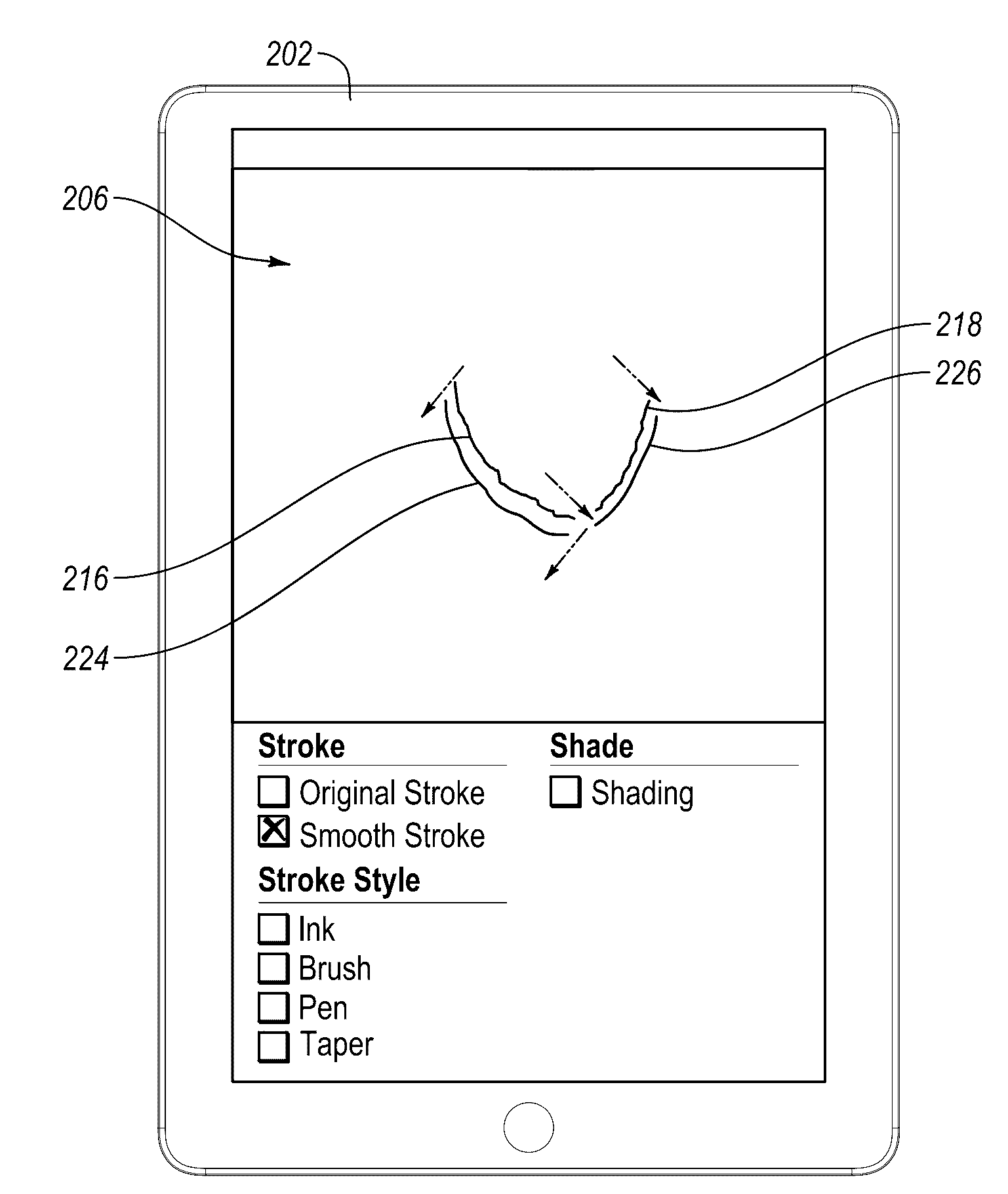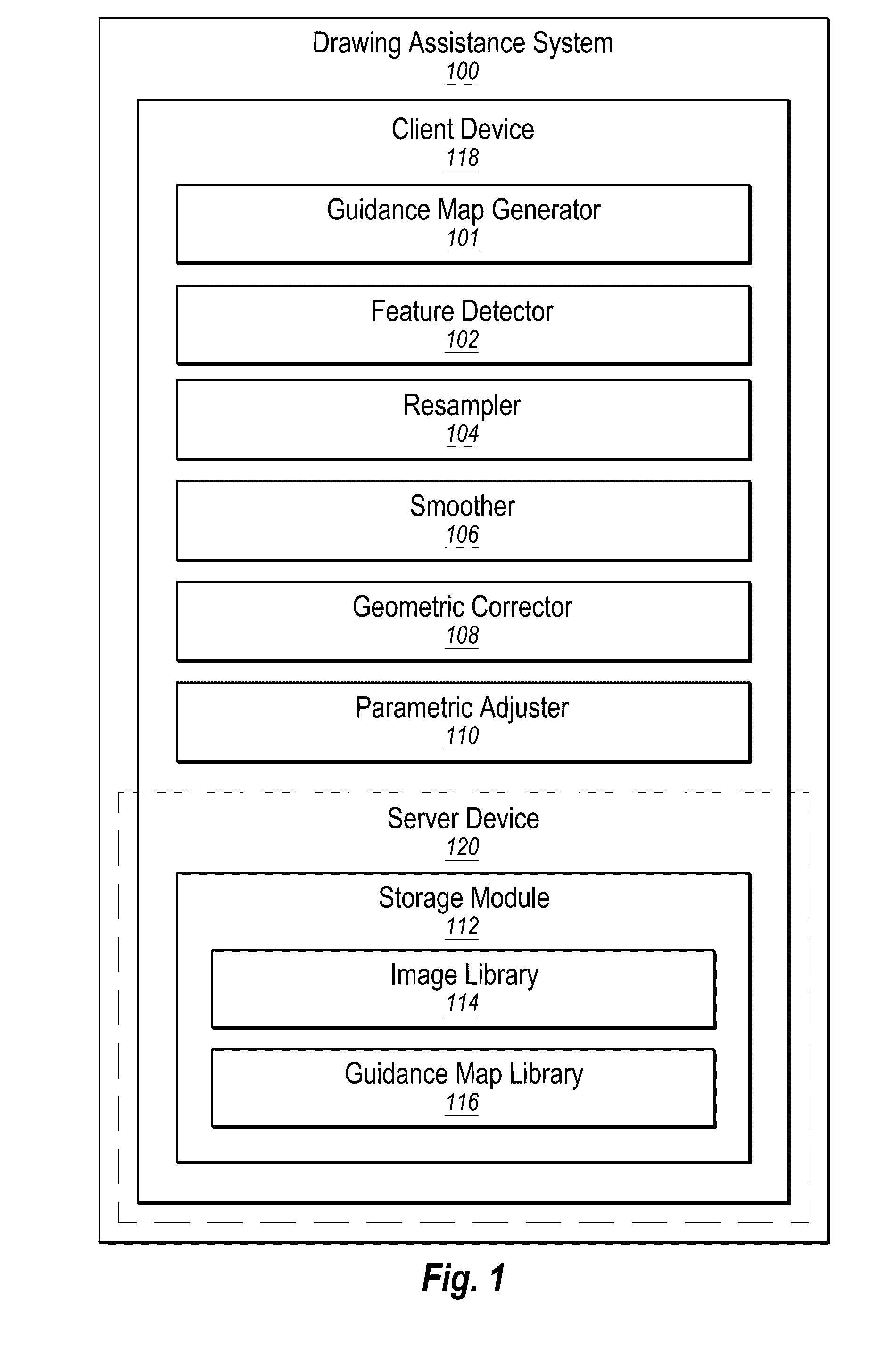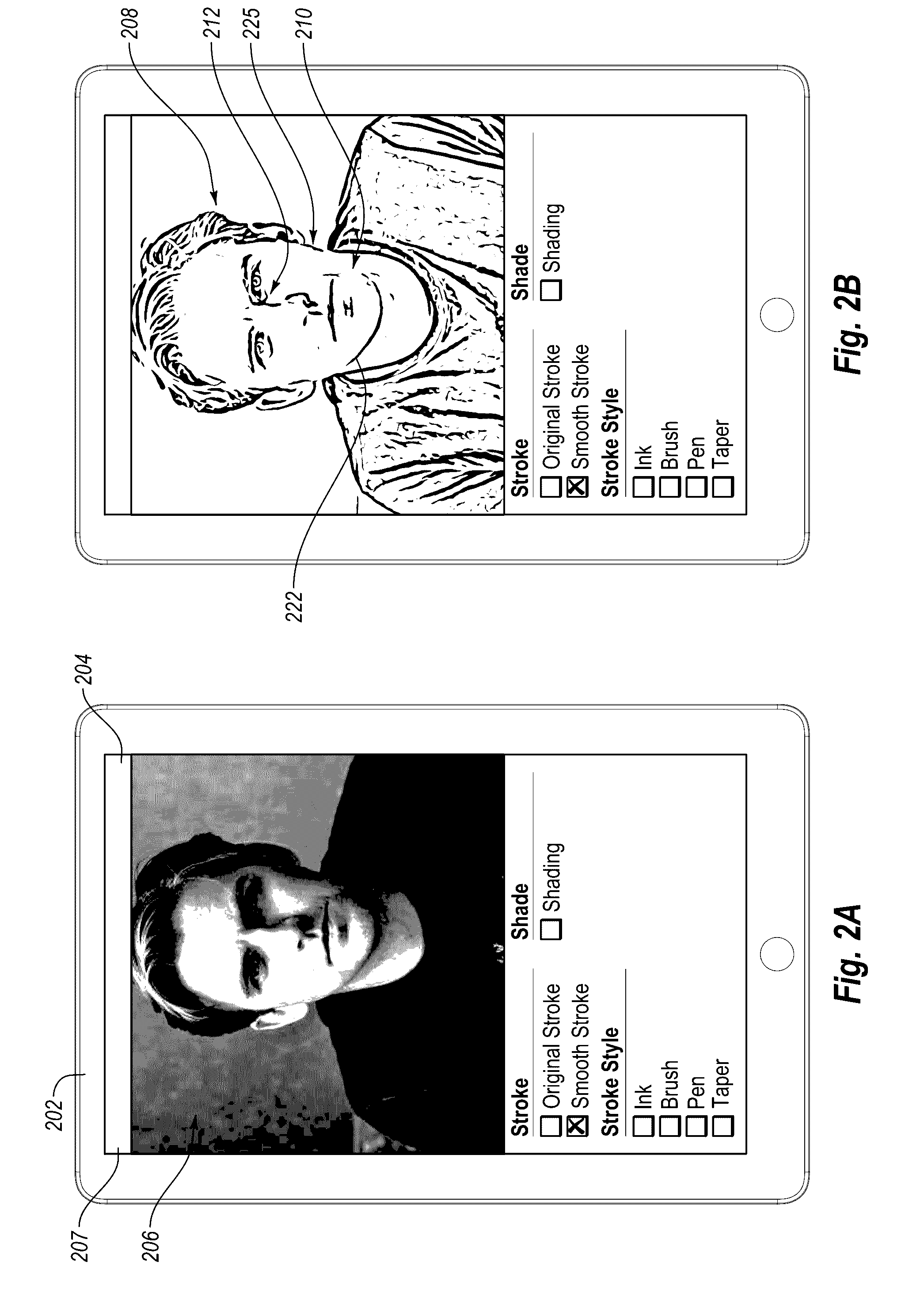Providing drawing assistance using feature detection and semantic labeling
a technology of semantic labeling and feature detection, applied in the field of providing user with drawing assistance, can solve the problems of reducing or minimizing the user's style, unable to achieve creative and technical skills, and hesitant drawing of novices
- Summary
- Abstract
- Description
- Claims
- Application Information
AI Technical Summary
Benefits of technology
Problems solved by technology
Method used
Image
Examples
Embodiment Construction
[0043]One or more embodiments of the present invention include a drawing assistance system that helps a user create an original drawing or sketch. In particular, the drawing assistance system provides an image on top of which a user can draw. As a user draws a stroke, the drawing assistance system geometrically corrects the stroke by moving the stroke toward the feature of the image the user is intending to draw. The drawing assistance system can use one or more guidance maps as a baseline or guide for correcting user strokes. The guidance map(s) can provide an indication of where and / or how a user should place their strokes.
[0044]To help ensure that user strokes are properly corrected (i.e., that a user stroke is moved toward a feature of the image the user is intending to draw rather than another nearby feature), at least one of the guidance maps can include semantic or feature labels indicating the location of one or more features of the image. As a user draws a stroke, the drawi...
PUM
 Login to View More
Login to View More Abstract
Description
Claims
Application Information
 Login to View More
Login to View More - R&D
- Intellectual Property
- Life Sciences
- Materials
- Tech Scout
- Unparalleled Data Quality
- Higher Quality Content
- 60% Fewer Hallucinations
Browse by: Latest US Patents, China's latest patents, Technical Efficacy Thesaurus, Application Domain, Technology Topic, Popular Technical Reports.
© 2025 PatSnap. All rights reserved.Legal|Privacy policy|Modern Slavery Act Transparency Statement|Sitemap|About US| Contact US: help@patsnap.com



